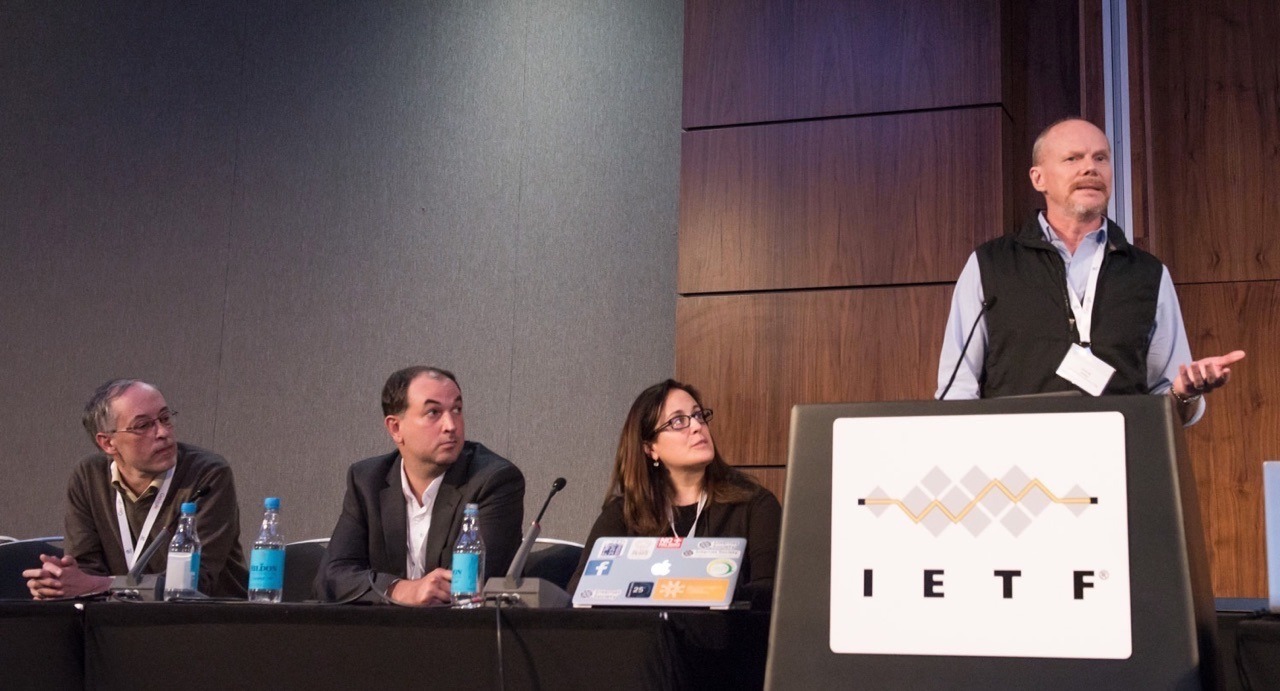How do we connect everyone, everywhere, to the Internet? What role do “community networks” play in helping connect more people? How can we best use wireless spectrum and what are the issues with that? How can satellites fit into the picture? And what is the state of satellite technology? And what about the role of “space lasers”?
All that and more was the subject of yesterday’s featured panel at the Technical Plenary at IETF 101 in London.
– Agenda
– Video/slides/chat
– Audio-only
Organized by the Internet Architecture Board (IAB) and the Internet Research Task Force (IRTF), the panel was moderated by our Jane Coffin and included these speakers:
- Leandro Navarro Moldes, Associate Professor, Universitat Politècnica de Catalunya (SLIDES)
- Steve Song, Wireless Spectrum Research Associate, Network Startup Resource Center (SLIDES)
- Jonathan Brewer, Consulting Engineer, Telco2 Limited (SLIDES)
You can watch the recording of the session at:
The session began with Leandro Navarro outlining how half the world is still not connected to the Internet and is not able to benefit from all the opportunities. He explored the reasons why, the challenges with business models, and the opportunities to improve the situation. He spoke about the different types of community networks and the need for small providers to cooperate and collaborate to be most effective.
Next Steve Song opened with the provocative question – do we care more about connecting refrigerators than poor people? He went on to talk about the impact of fiber optic connections in Africa – and then explained both the opportunities and challenges of using radio spectrum for communication. Steve discussed the economics and politics of spectrum allocation and finished looking at some of the upcoming next generation technologies. A key message: access diversity is critical!
Finally, Jonathan Brewer provided a view on satellite options for Internet access. He outlined typical orbits and latencies; spoke about different architectures and common deployment scenarios; and explained different satellite spectrum bands and then pros and cons. We learned about “rain fade” and other terms. He also offered three newer commercial ventures as examples of the exciting activities in the space sector.
After the panelists spoke, Jane opened the floor to questions. Attendees asked about the diversity of options, the need to include more people and regions, and more. And yes, there was a discussion about “space lasers” and how some of these new networks are building mesh networks based on using lasers between satellites.
It was an educational session that offered many ideas for how to connect the rest of the world.
If you would like to learn more and find out how to help:
Image credit: Stonehouse Photographic

